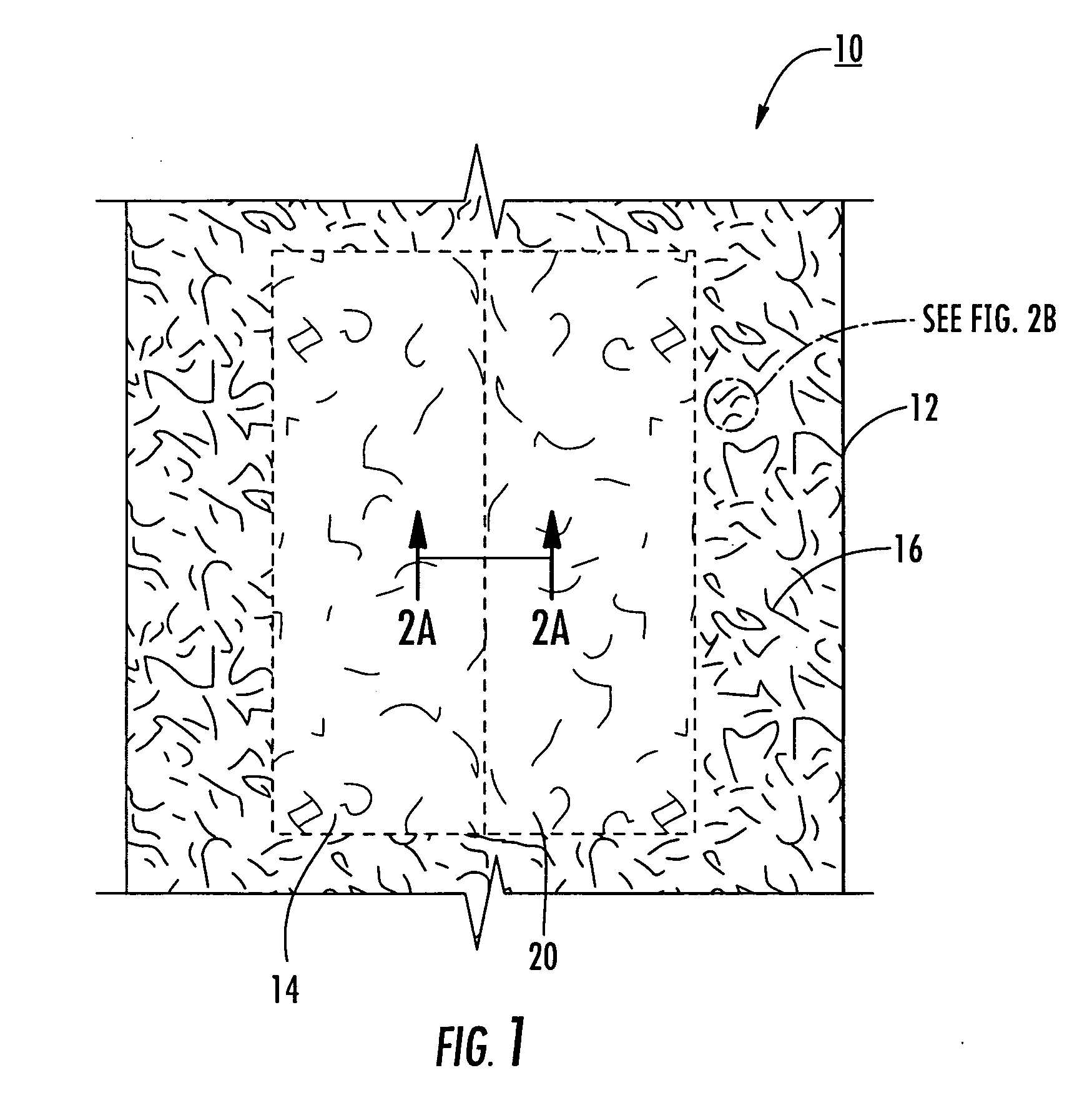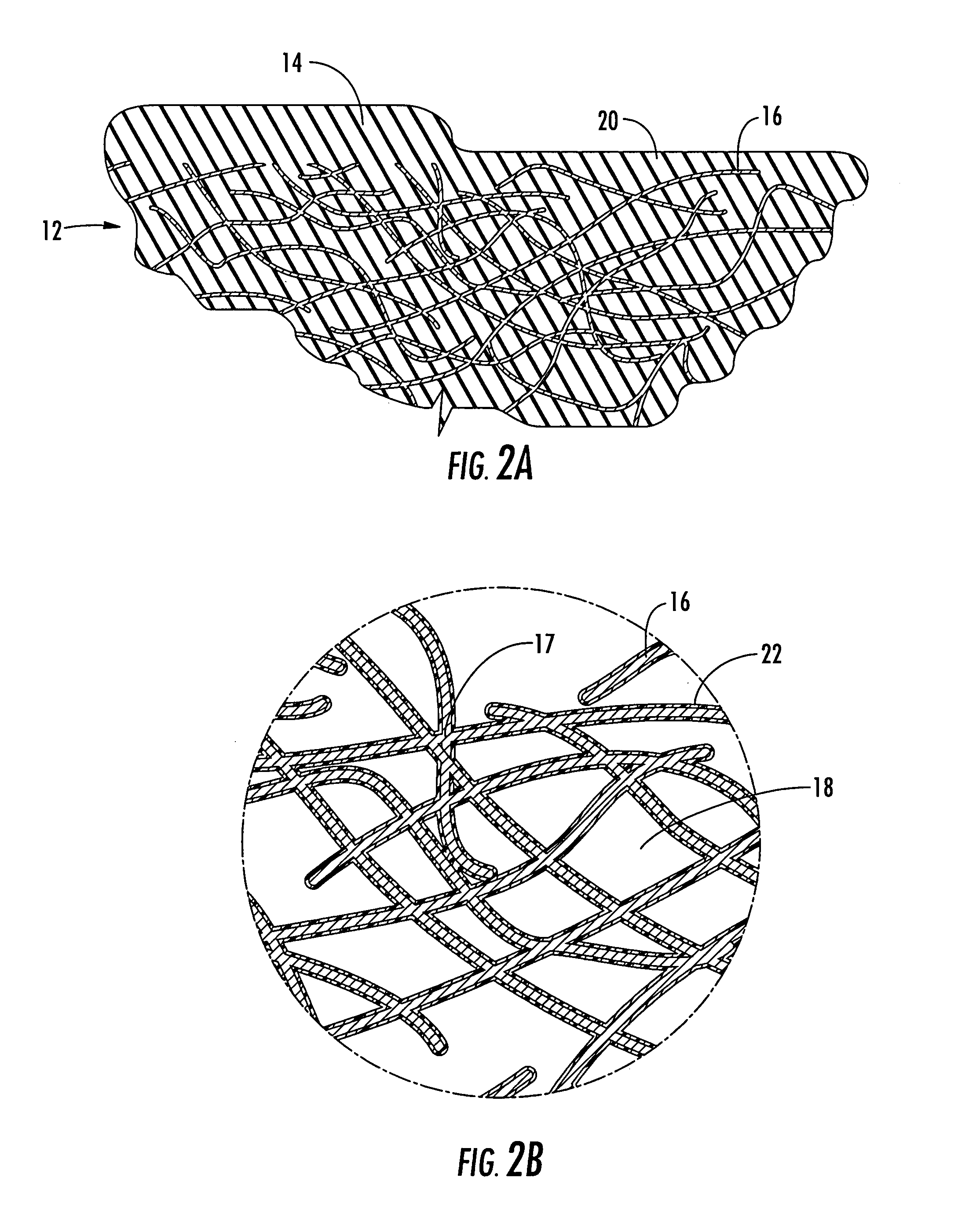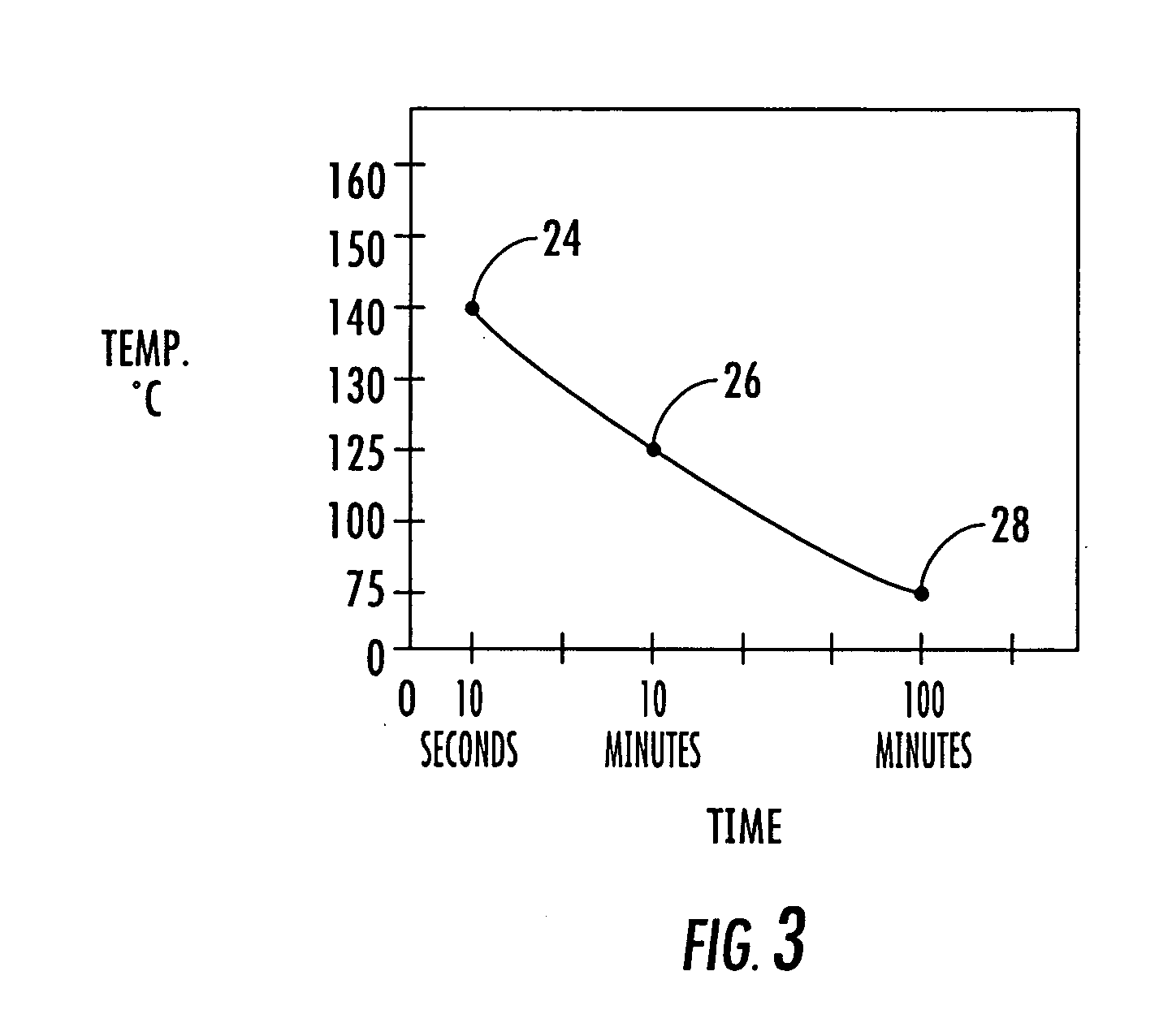Reinforced elastic fiberous web
a technology of elastic fibers and fibers, applied in the field of lubricant reinforcement, elastic, nonwoven fibrous webs, can solve the problems of articles worn against users' skin, and achieve the effect of comfortable wear against skin, and resistance to tearing and deformation
- Summary
- Abstract
- Description
- Claims
- Application Information
AI Technical Summary
Benefits of technology
Problems solved by technology
Method used
Image
Examples
example i
[0058] 1. Dilute silicone with xylene solvent to make a silicone solution.
[0059] 2. Soak a spun bond neck stretch web material in the silicone solution.
[0060] 3. Remove excess solution from the spun bond neck stretch material.
[0061] 4. Heat the spun bond material in an oven at about 118° C. for about 15 minutes to polymerize the silicone with fibers of the spun bond neck stretch material.
example ii
[0062] 1. Place thin lines of silicone on an aluminum plate, or other non-stick surface.
[0063] 2. Transfer the lines of silicone onto a spun bond neck stretch fibrous web by pressing the fibrous web onto the silicone material.
[0064] 3. Place the fibrous web in an oven at about 118° C. for about 15 minutes to polymerize the silicone with fibers of the spun bond neck stretch material.
[0065] The lowest concentration of silicone solution tested contained 12.5% (by weight) of silicone in xylene; e.g., 12.5 grams of silicone to 87.5 grams of xylene. Much lower concentrations can be used if multiple step coating is employed. Specifically, the web 10 can be coated with the silicone solution, the xylene evaporated by heat or airflow, and the web 10 coated again with the silicone solution. The steps can be repeated until the desired elasticity and thickness of the coatings 14,20 are achieved.
[0066] The foregoing test methods provided the web 10 with increased elasticity and tear resistanc...
PUM
| Property | Measurement | Unit |
|---|---|---|
| elongation | aaaaa | aaaaa |
| elongation | aaaaa | aaaaa |
| elongation | aaaaa | aaaaa |
Abstract
Description
Claims
Application Information
 Login to View More
Login to View More - R&D
- Intellectual Property
- Life Sciences
- Materials
- Tech Scout
- Unparalleled Data Quality
- Higher Quality Content
- 60% Fewer Hallucinations
Browse by: Latest US Patents, China's latest patents, Technical Efficacy Thesaurus, Application Domain, Technology Topic, Popular Technical Reports.
© 2025 PatSnap. All rights reserved.Legal|Privacy policy|Modern Slavery Act Transparency Statement|Sitemap|About US| Contact US: help@patsnap.com



